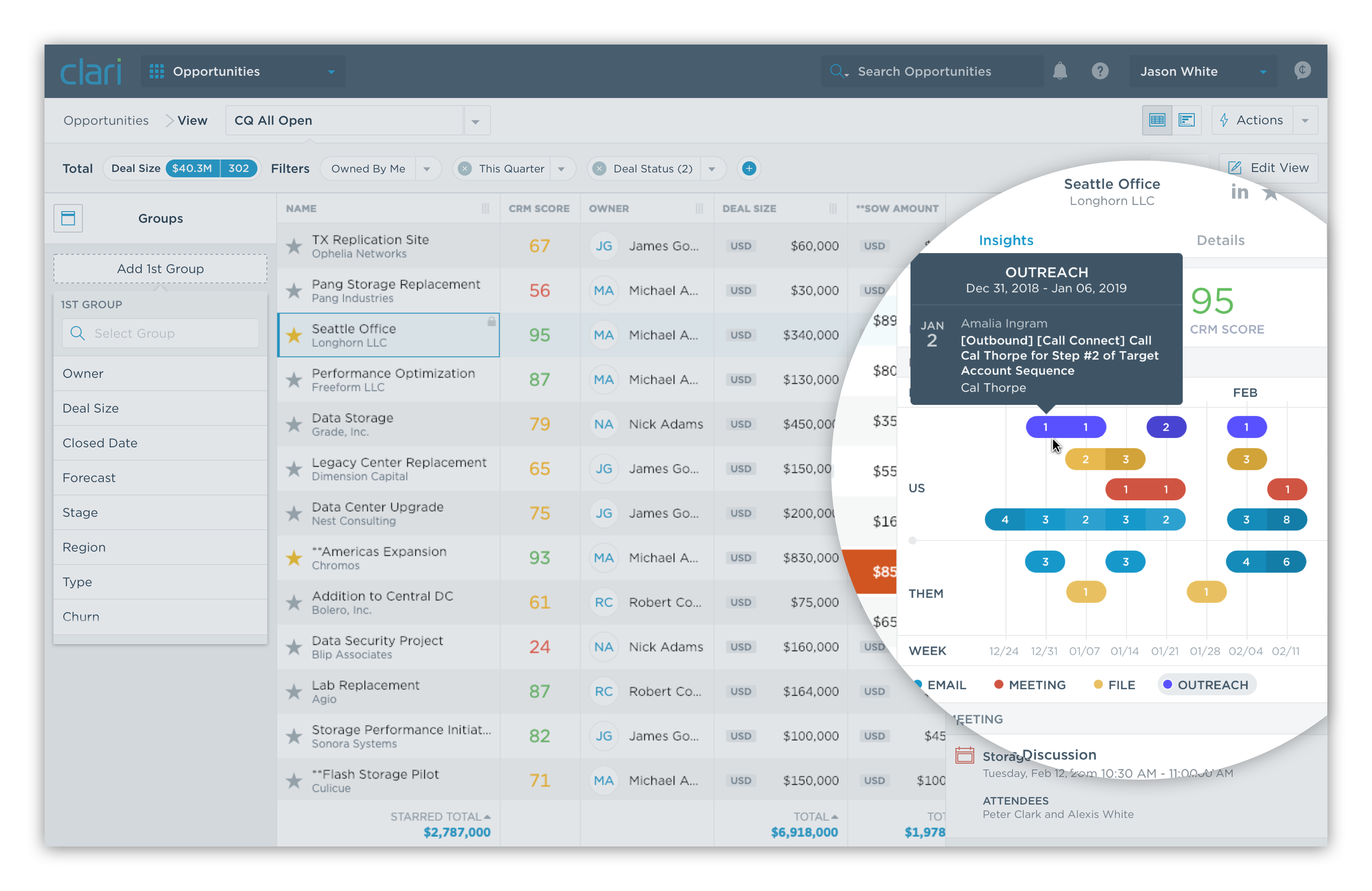Sales managers have long used sales activity data—all of the actions that the sales and marketing teams make to close a deal—to track the health of deals, coach reps, and assess their productivity. But this information can also be hugely valuable to marketers who use it to not only provide strategic and targeted efforts that help accelerate deals but accurately measure the effectiveness of marketing programs in driving opportunities to close.
In fact, sharing data can have a massive impact: Aligning sales and marketing generates a whopping 208% more revenue from marketing efforts while aligned organizations achieve an average of 32% year-over-year revenue growth. Meanwhile, a lack of data consistency and clarity can have disastrous effects—according to a recent CIO article, up to 69% of all customer relationship management (CRM) projects fail, and one main culprit is either not having accurate and transparent sales data or not having any sales data at all.
So how exactly does opening up sales activity data benefit marketing? Let's first look at what sales activity data is.
What is sales activity data?
Sales activity data consists of all of the seller's activities as well as all the prospect interactions throughout the sales cycle as captured in:
- Emails
- Meetings
- Attachments sent and received
- Phone calls
- Webinar registrations
- Content downloads
- Website visits
- Direct mailings and advertisements
Taken together, these data points show revenue operations teams exactly what's happening in the days, weeks, and months leading up to a sale. This snapshot shapes how managers work with their sales reps, informing everything from how they inspect the pipeline and monitor forecasting to their coaching.
(Sidenote: If you're thinking "Wow, it would be great to have visibility into all of those signals, but no way does our sales team track all of that," we got you covered. Clari automatically harvests sales activity data so that sales doesn't have to.)

How marketing can leverage sales activity data
Historically, sales activity data has been heavily siloed, available only to sales. But opening up this data to the marketing team can benefit the entire organization. Here's how:
- Buying group analysis: The buyer in most B2B purchases is a team of individuals within a prospect organization who work together to research and acquire a solution that solves a business problem. When marketing gets access to activity data, they can start identifying the key stakeholders that are typically involved in deals and build programs and campaigns that target them directly.
- Real-time targeting: Knowing exactly who sales is engaging with during the sales cycle allows marketing to continue to nurture engaged contacts and help propel a deal forward. For example, if marketing sees that sales is working on a deal with one of its top accounts, marketing can trigger display or social ads to target that account and reinforce the sales team's message. Equally important is knowing who from the core buying group is not engaged and applying marketing tactics to drive brand awareness.
- Waking the dead: Only a small percentage of opportunities end up as deals. Maybe the prospect didn't have budget or the timing just wasn't right. These things happen. However, that doesn't mean that the opportunity is out of play forever. Lost opportunities can come back to life and if marketing has access to contacts in the deal, they can continue to nurture them and stay top-of-mind. Through past activity data, marketing can see which pieces of content or emails have already been sent and can avoid repeating tactics.
- Eliminating the need for clunky follow-up: When there is a single source of truth that automatically tracks prospect calls, emails, meetings, and more in real time, marketers don't have to wonder what happened to their leads and can stop bugging their sales counterparts. This changes the dynamic between sales and marketing, allowing them to collaborate openly and strategically rather than constantly nag each other for updates.
- Visibility into which marketing campaigns and activities are most effective: By analyzing sales activity data, the marketing team can see not only which deals are moving through the funnel, but also which campaigns and programs are associated with won opportunities. These insights can help them craft even more effective marketing strategies and see what they should double down on and what's not working so well to validate their requests for budget. For instance, Clari's integration with Marketo lets marketers see how prospects engage with marketing campaigns and how it fits into the larger sales activity picture.
More signals means more insights, and more insights mean more closed deals, but here's the problem: All of those signals are siloed in their own platform, leaving the data disconnected and your teams without a complete picture. Clari brings all of that data into our connected revenue operations platform by partnering with dozens of sales and marketing tools. These integrations not only help reps sell better, but they also keep marketing in the loop so they can do their part.



